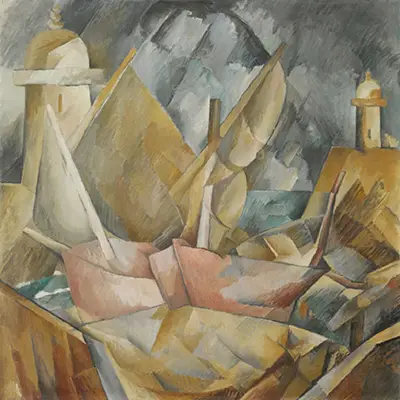It was part of an exhibit in early 1909 at the Salon des Indépendants, in Paris. The painting clearly shows the Channel coast as a backdrop to two boats that are bobbing about on the water.
The image of the two sailboats is fragmented on the canvas, so that the observer cannot easily place them in time or in space. Their placement on the water appears to constantly change depending upon how the painting is viewed.
Are the boats moving forward or are they moving backwards? The clouds that have been painted, along with the white foam on the water, adds drama and a sense of foreboding to the scene.
What is most astounding about Little Harbour in Normandy, is that it was painted entirely from memory. The way in which the sky has been painted, almost as if it is made up of textured squares and patterns is truly impressive and characteristic of the Cubist art form.
The sky is painted the same way as the landscape, with just as much to see and admire. The two boats, although the central point of the painting, are just one element. The fragmented lighthouse, also draws the eye to the beauty of the image.
Georges Braque painted the iconic Little Harbour in Normandy in 1909. This was during the time that Braque was collaborating artistically with the great master, Picasso.
Together they created the art form, know today as Cubism, in which everyday objects are fragmented and pulled apart on the canvas, so that they do not appear as they should in their natural form.
Cubism offers a new perspective to the ordinary. The partnership ended in 1909 as Braque was drafted in to fight in World War 1.


